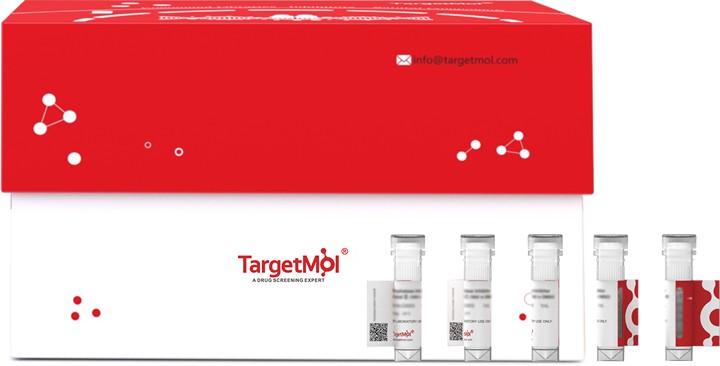Shopping Cart
- Remove All
 Your shopping cart is currently empty
Your shopping cart is currently empty

BoNT/E Protein, Clostridium butyricum, Recombinant (His & SUMO) is expressed in E. coli expression system with N-6xHis-SUMO tag. The predicted molecular weight is 63.7 kDa and the accession number is P30995.

| Pack Size | Price | Availability | Quantity |
|---|---|---|---|
| 20 μg | $360 | 20 days | |
| 100 μg | $745 | 20 days | |
| 1 mg | $2,530 | 20 days |
| Biological Activity | Activity has not been tested. It is theoretically active, but we cannot guarantee it. If you require protein activity, we recommend choosing the eukaryotic expression version first. |
| Description | BoNT/E Protein, Clostridium butyricum, Recombinant (His & SUMO) is expressed in E. coli expression system with N-6xHis-SUMO tag. The predicted molecular weight is 63.7 kDa and the accession number is P30995. |
| Species | Clostridium butyricum |
| Expression System | E. coli |
| Tag | N-6xHis-SUMO |
| Accession Number | P30995 |
| Synonyms | Botulinum neurotoxin type E,Bontoxilysin-E,BoNT/E |
| Amino Acid | PTINSFNYNDPVNNRTILYIKPGGCQQFYKSFNIMKNIWIIPERNVIGTIPQDFLPPTSLKNGDSSYYDPNYLQSDQEKDKFLKIVTKIFNRINDNLSGRILLEELSKANPYLGNDNTPDGDFIINDASAVPIQFSNGSQSILLPNVIIMGAEPDLFETNSSNISLRNNYMPSNHGFGSIAIVTFSPEYSFRFKDNSMNEFIQDPALTLMHELIHSLHGLYGAKGITTKYTITQKQNPLITNIRGTNIEEFLTFGGTDLNIITSAQSNDIYTNLLADYKKIASKLSKVQVSNPLLNPYKDVFEAKYGLDKDASGIYSVNINKFNDIFKKLYSFTEFDLATKFQVKCRQTYIGQYKYFKLSNLLNDSIYNISEGYNINNLKVNFRGQNANLNPRIITPITGRGLVKKIIRFCKNIVSVKGIR |
| Construction | 2-422 aa |
| Protein Purity | > 90% as determined by SDS-PAGE. |
| Molecular Weight | 63.7 kDa (predicted) |
| Endotoxin | < 1.0 EU/μg of the protein as determined by the LAL method. |
| Formulation | Tris-based buffer, 50% glycerol |
| Reconstitution | A Certificate of Analysis (CoA) containing reconstitution instructions is included with the products. Please refer to the CoA for detailed information. |
| Stability & Storage | Lyophilized powders can be stably stored for over 12 months, while liquid products can be stored for 6-12 months at -80°C. For reconstituted protein solutions, the solution can be stored at -20°C to -80°C for at least 3 months. Please avoid multiple freeze-thaw cycles and store products in aliquots. |
| Shipping | In general, Lyophilized powders are shipping with blue ice. Solutions are shipping with dry ice. |
| Research Background | Botulinum toxin causes flaccid paralysis by inhibiting neurotransmitter (acetylcholine) release from the presynaptic membranes of nerve terminals of eukaryotic host skeletal and autonomic nervous system, with frequent heart or respiratory failure. Precursor of botulinum neurotoxin E which has 2 coreceptors; complex polysialylated gangliosides found on neural tissue and specific membrane-anchored proteins found in synaptic vesicles. Receptor proteins are exposed on host presynaptic cell membrane during neurotransmitter release, when the toxin heavy chain (HC) binds to them. Upon synaptic vesicle recycling the toxin is taken up via the endocytic pathway. When the pH of the toxin-containing endosome drops a structural rearrangement occurs so that the N-terminus of the HC forms pores that allows the light chain (LC) to translocate into the cytosol. Once in the cytosol the disulfide bond linking the 2 subunits is reduced and LC cleaves its target protein on synaptic vesicles, preventing their fusion with the cytoplasmic membrane and thus neurotransmitter release.; Has proteolytic activity. After translocation into the eukaryotic host cytosol, LC hydrolyzes the '180-Arg-|-Ile-181' bond in SNAP25, blocking neurotransmitter release.; Responsible for host epithelial cell transcytosis, host nerve cell targeting and translocation of light chain (LC) into host cytosol. Composed of 3 subdomains; the translocation domain (TD), and N-terminus and C-terminus of the receptor-binding domain (RBD). The RBD is responsible for the adherence of the toxin to the cell surface. It simultaneously recognizes 2 coreceptors; host polysialated gangliosides and the receptor proteins SV2A and SV2B in close proximity on host synaptic vesicles. Interaction with SV2 proteins requires SV2 glycosylation. The N-terminus of the TD wraps an extended belt around the perimeter of the LC, protecting Zn(2+) in the active site; it may also prevent premature LC dissociation from the translocation channel and protect toxin prior to translocation. The TD inserts into synaptic vesicle membrane to allow translocation into the host cytosol. Binds ganglioside GD1a in vitro. |

Copyright © 2015-2025 TargetMol Chemicals Inc. All Rights Reserved.